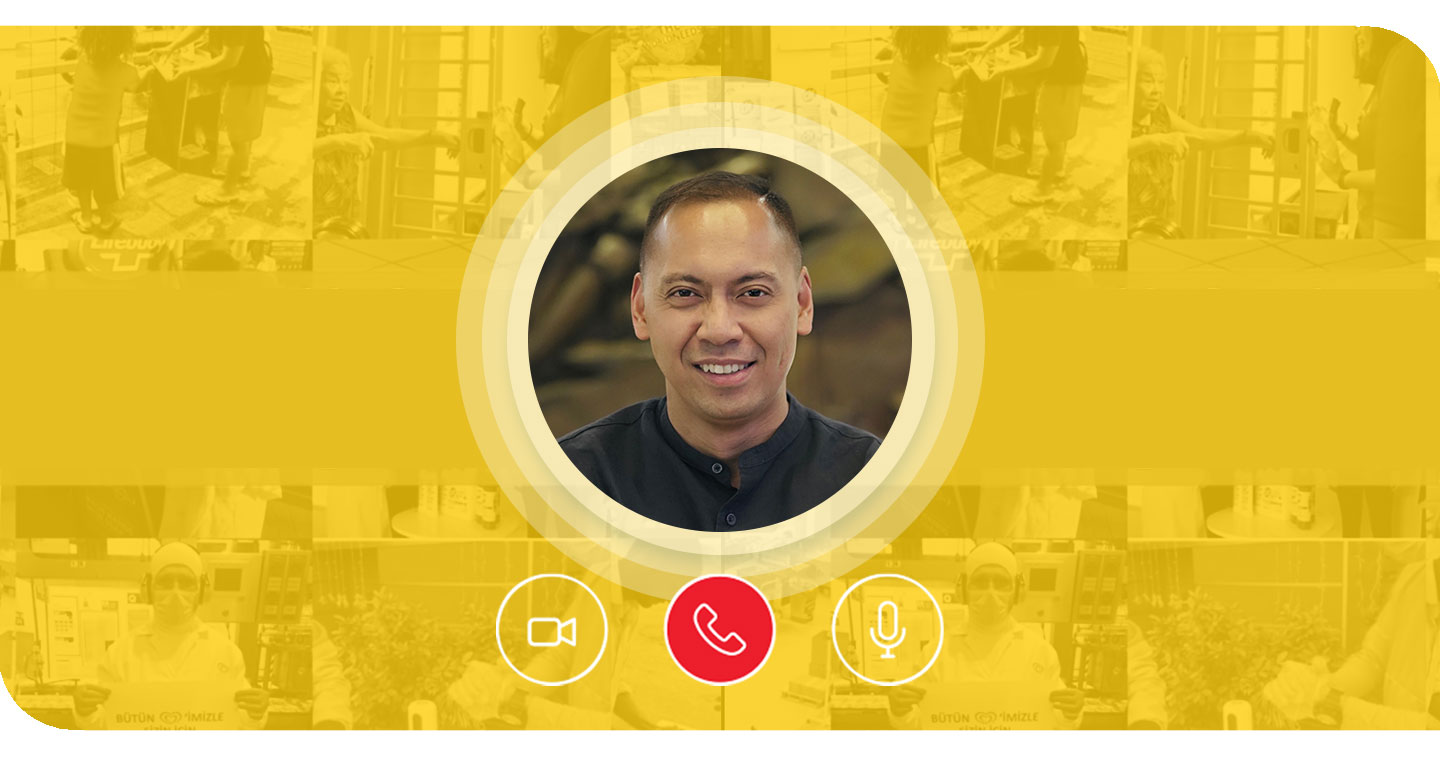MANILA, PHILIPPINES – Weeks into the Luzon-wide community quarantine, and businesses are still learning to deal with what may be the new normal – working from home. Companies are proving now more than ever just how digital savvy their employees and their systems have become. Conference rooms have been replaced with Zoom con-call, casual chats (or gossip?) over the water cooler are now in Viber messages, and e-mails and Slack messages are without a doubt piling up.
Unilever is just among the many companies that have been affected. A skeletal workforce continues to operate, but many are now working remotely as a result of the lockdown. After an extended experience working remotely, the FMCG giant’s media director, Dennis Perez, shares with adobo magazine five things he has learned especially since right before the community quarantine was enacted, he was already practicing self-isolation right after a vacation.
Read his full write up below:
While I was enjoying my vacation in Seoul, our company implemented a mandatory 14-day precautionary self-quarantine policy to those who have visited or transited in a COVID-19 affected country. Unfortunately (or fortunately), South Korea was in the list – and it was too late for me to cut my trip (the email dropped on the day before my departure from Seoul).
I landed in Manila with enthusiasm for the next 14 days. I knew being away from the office for so long would throw me off-rhythm, but I usually get the freshest ideas every time I’m in a fiddly situation. And true enough, I’ve ended my quarantine today with five novel (pun intended) agile-working insights.
1. Offices are Petri Dishes of a Global Work Pandemic: Unnecessary Meetings
Introducing COMEET-XX, a global work pandemic where XX is the year you started working. When I was a young Management Trainee, I never questioned why we spent the whole day (sometimes the whole week) in meetings. Why should I? Everyone was doing it, and everyone seemed ok with it. I just assumed: meeting = work. I was infected with COMEET-01.
Fast forward to 2020. While working remotely, I deliberately purged my Outlook calendar (out of necessity) and kept only the essential meetings – where the squad needed to decide on something, or where my input was necessary.
First to go were Workshops (four-hour to whole day meetings where most of the topics lay outside my influence) and Recurring Project Meetings or Task-Forces (where no one ever questioned why we needed to do this every week, even if most items could be closed via email). And with the remaining meetings in my calendar, I was forced to cut those from an hour to 30 minutes, because listening via earphones was a tad bit torturous.
Surprisingly, more decisions and agreements were made during those 14 days. Projects moved, mostly ahead of schedule. And we all got the space to deliver the individual tasks required, plus a lot more time to do things beyond work (like learning how to cook, organizing my closet and taking care of my plants).
So the next time you get invited to a meeting, try to ask: is this necessary? If you get a blank stare in return, move away and quarantine your calendar.
2. The Virality of the Meeting Pandemic is Proportional to the Size of your Fixed Meeting Invite
Let’s talk about “CO” in COMEET-XX. During last year’s IMMAP Digicon, Patty McCord (ex-Chief Culture Officer of Netflix) said “Companies should raise high-performing teams, not families.”
Very often, we invite people in the meeting because we love the comfort we feed each other. It gives us a reassurance that someone will cheer us on as we catch all the shit from the fan (which is still a gross thing to do even with an enthusiastic audience around you).
We want people in our meetings, we need warmth and we often feel bad if they skip it. We resort to a fixed mailing list (“an impactful meeting needs to have more people in the room”) that we blast to all without mindfully evaluating who we are inviting.
A high-performing team does the opposite: they just call the right persons in the “room” – no more, no less.
Away from the office (and also because it is difficult to do a conference call through mobile), I was forced to connect directly to the most able person in the team. Talking to a single (qualified) person makes a big difference. Actions were delivered quicker, as there’s a shield from unnecessary “noise” from those who have no influence on the subject matter and unnecessary “cheers” from your work family.
We don’t need to CO-create, CO-decide and CO-meet every time. It often dilutes output and accountability, not to mention wastes time and energy. Best decisions are usually made by one person, or together with the most qualified person in the team.
3. Being in the Office to Attend Meetings can also be Considered as a Lockdown
Space and time are intertwined, according to Albert Einstein. Nature abhors an empty space, according to Aristotle. Remote Working proved both to be true.
Our new office has more meeting rooms than our previous one. Yet still, it is not enough to accommodate the demand. Adding meeting rooms just added more meetings, and having an open area available naturally begets a gathering. This is the case for every office. Instinctively, the reaction is to maximize facilities and fill it up.
Fortunately, working remotely gives no access to a proper physical meeting area. My bedroom is just too comfy, and a coffee shop is just too noisy. A virtual meeting space is an obvious answer, but since these spaces are secured-by-demand, there is literally no “real estate” to maximize and fill. Supply is always equal to demand. There is no need to secure meeting spaces in advance, which usually ties teams to hold a “much anticipated” gathering in the future (even if unnecessary).
Having no physical space to meet also frees up time. A virtual meet is usually faster. Communicating through WiFi frequencies forces everyone to be direct-to-the-point. It cripples the ability to be verbally and expressively animated (this “show” can take a few minutes in a physical gathering). And it compels people to mute themselves if they are not speaking, cutting unnecessary “ooohs and aaahs” which cumulatively steals significant time in a face-to-face meeting.
Remote Working has successfully redefined time and space.
4. Digital Transformation is a Must; and it Should Start with Connecting Employees
Digital Transformation is usually about connecting brands and services to end-users. Whilst important, working remotely showed the opportunity for digital to connect internal customers too: the employees.
An effective, UX friendly collaboration platform is an imperative for proper agile working to function. A good collaboration tool should be able to do more than video calls. MS Teams, for example, enabled teams to virtually connect through Kanban boards, topic-based messaging channels, file sharing and more.
But more than finding the right collaboration tool, work disruption due COVID-19 should open the conversation about the softer side of Digital Transformation: policies, benefits and culture.
Is the company willing to give an allowance for connectivity and electricity (my bill increased by 44% this month)? Is access and technology democratized across the organization regardless of work level and function? Is the organization ready to consider agile working as a Business As Usual (BAU) policy rather than a Business Continuity Plan (BCP) measure?
5. Culture Enables Agile and Remote Working
Whether there is a pandemic or not, agile is the future of work. Technology is now widely available and is facilitating flexibility in the workplace. But the bigger and more important question is: is your organization culturally ready to empower people to decide how to work?
“Liberating Rigor” is one of the leaderships values I learned in Unilever. The tension created by the two words makes this culture-defining phrase beautiful to me. “Rigor” brings the importance of performance, whilst “liberating” enables freedom within company rules and frameworks. It brings psychological safety in the company, enabling people to try different work approaches to deliver maximum results. This is Agile Working for me.
My 14-day COVID-19 self-quarantine gave me the opportunity to try different remote working technology, bend time and space to collaborate, and question practices I never thought of questioning before. But more than that, it made me realize again that amidst all the volatility and uncertainty the world can throw upon us and our businesses, one value will deliver business performance, no matter what. That value is TRUST.
The company must trust its employees, and the employees must trust themselves that they can perform better, while not being in the office.
As I was about to publish this article, the government announced a total lockdown of Metro Manila. This extends my quarantine by another month, turning this temporary remote working arrangement into something continual. COVID-19 has given us the opportunity to reinvent the way we work. What we are experiencing may appear transitory, but this could be the “new normal”. A BCP quickly rapidly turning into a BAU.
Therefore, the challenge to employees: Are we using this period of self-isolation to understand our role in digital transformation? Are there work-from-home behaviors that we can use when we need to physically work with our teams again? How can we improve productivity through work-life integration?
And to businesses: Can we productively use remote working in addressing other issues aside from COVID-19? Can this address employee pain points such as traffic and mental health? Do we have the right strategy and policy in place to encourage a culture of agility?
COVID-19 has urged companies to adopt novel ways of keeping businesses afloat. And while we work (from home) to survive this crisis, may it also expand our perspective on how work is currently being redefined.
About the Author

Dennis Perez is the Media Director of Unilever Philippines, the country’s biggest advertiser, where he leads the creation and execution of local media strategies for some of the world’s biggest brands in Personal Care, Home Care, Foods and Refreshments. A number of his works were recognized in local and international awards, including Festival of Media, D&AD, New York Festivals, APAC Effie, WARC, MMA Smarties and Spikes.
He is also leading E-Commerce Media for Unilever Southeast Asia and Australasia. He is the President of the Internet & Mobile Marketing Association of the Philippines (IMMAP); and was the Chairman of the Digital Measurement Board of the Philippines (DMB) and the 2018 IMMAP Digital Congress (Digicon).
Whilst enjoying media and marketing as a profession, Dennis is a licensed Chemical Engineer. Thus, he believes in building brands with magic and logic.








